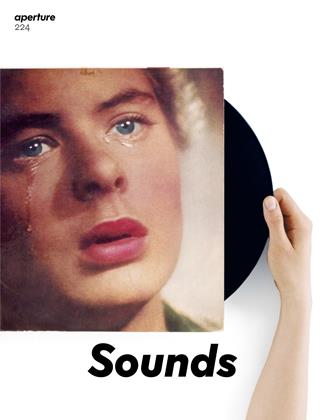Sounds
EDITORS’ NOTE
While William Eggleston’s off-kilter photographic compositions and revolutionary use of color have been discussed for decades, for many fans his piano compositions will be a revelation. In this issue investigating photography and sound, writer John Jeremiah Sullivan recounts a recent visit to Memphis to meet with the photographer, during which Eggleston serenaded Sullivan and spoke about his passion for classical music (Bach in particular) and his interest in audio recording. Considering that Eggleston is an audiophile, and a denizen of an American music capital, it isn’t surprising that music plays a frequent cameo in his images, many of which have graced album covers. Compulsively abstract and addictive, an Eggleston plays like a good hook.
A photograph of Eggleston’s from 1985 featuring a Leica resting near a reel-to-reel encapsulates two means for registering our perception of the world. “Of our five senses, we’ve only worked out how to record two: sight and sound,” Sara Knelman observes in these pages, tracing how the camera has continuously chronicled the phonograph, from a young Edison proudly posing with his new invention in 1878 to contemporary artists who make vinyl a subject of their work. With the advent of digital audio, the analog endures and LP covers, at twelve inches tall, continue to tell their own history of photography. As Vince Aletti, a disco writer turned photography critic, notes, a cover is “sometimes more memorable than the music it helps to deliver.”
But when the music stays with you, it’s indelible. Before turning to photography and video installation, Stan Douglas moonlighted as a DJ, a past that shapes his films and photographs reprising jazz history, New York disco, and the golden era of Columbia Records.
“The recording mechanism, just like a photograph, captures what we don’t intend,” Douglas notes in a conversation with the musician and historian Kwami Coleman. “We hear sounds we didn’t realize were there.”
Recorded music moves a crowd, creates a culture, defines and, much like a photograph, freezes a moment. The great Malian photographer Malick Sidibé, who died as we were working on this issue, captured the vivacious nightlife of 1960s and ’70s Bamako, when the French were gone but Western influences, including James Brown 45s, remained. Katsumi Watanabe traversed late-night Tokyo in the early 1980s and witnessed a youth culture of misfits and outsiders dancing all night in the seedy Shinjuku district. A decade later, Vinca Petersen documented Europe’s transient rave culture and roving communal “sound systems,” perhaps the last moment when it was truly possible to go off the grid. More recently, Michael Schmelling turned his lens on Chicago’s rich music scenes, from gritty basement punk shows to thumping hip-hop clubs. Photography might be a silent medium, but in recording the experience of sound, these images turn up the volume.
The Editors
 View Full Issue
View Full Issue
More From This Issue
-
 Words
WordsListening For Eggleston
Fall 2016 By John Jeremiah Sullivan -
 Pictures
PicturesMichael Schmelling Your Blues
Fall 2016 By Kelefa Sanneh -
 Words
WordsStan Douglas The Producer
Fall 2016 By Kwami Coleman -
 Words
WordsMidnight In Bamako
Fall 2016 By A. Chab Touré -
 Pictures
PicturesNo System Vinca Petersen
Fall 2016 By Sheryl Garratt -
 Pictures
PicturesNoisy Pictures
Fall 2016
Subscribers can unlock every article Aperture has ever published Subscribe Now
The Editors
-
 People And Ideas
People And IdeasAnsel Adams
Summer 1984 By The Editors -
 Editor's Note
Editor's NoteEditor's Note
Fall 1984 By The Editors -
 Editor's Note
Editor's NoteAperture
Spring 1986 By The Editors -
 Editor's Note
Editor's NoteFrance: New Visions
Winter 1996 By The Editors -
 Back
BackObject Lessons
Fall 2013 By The Editors -
 Note
NoteNote
Winter 2009 By The Editors, M.H.
Editor's Note
-
 Editor's Note
Editor's NoteEditor's Note
Summer 2019 -
 Editor's Note
Editor's NoteImmagini Italiane
Summer 1993 By Con Amicizia -
 Editor's Note
Editor's NoteAperture
Spring 1997 By The Editors -
 Editor's Note
Editor's NotePlaytime
Fall 2013 By The Editors -
 Editor's Note
Editor's NotePhotography As You Don't Know It
Winter 2013 By The Editors -
 Editor's Note
Editor's NoteOn Feminism
Winter 2016 By The Editors


